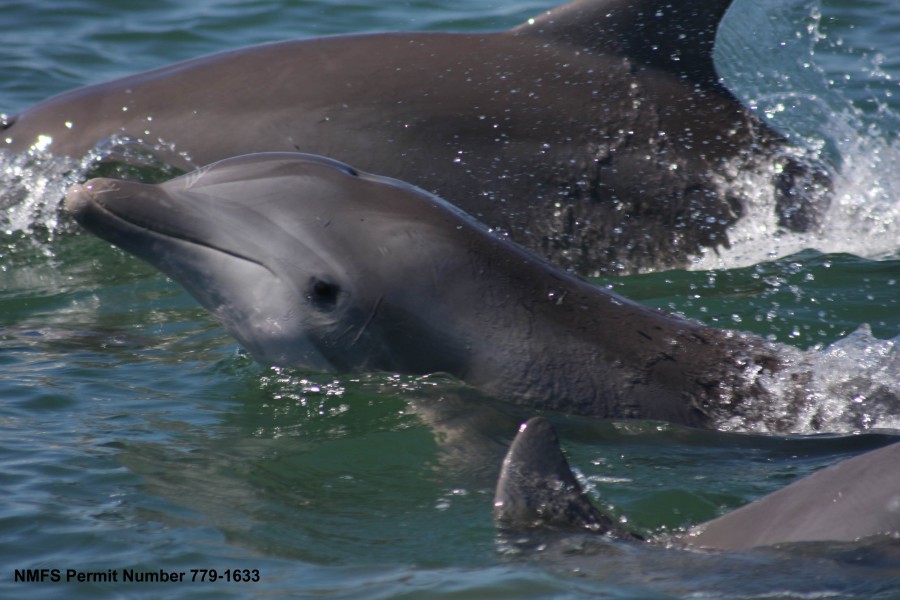- Global shark fisheries have for decades engaged in the deliberate catch of dolphins, seals and other marine mammals to use as bait for sharks, a new study has found.
- The researchers found the practice picked up when prices for shark fin, a prized delicacy in Chinese cuisine, went up from the late 1990s onward.
- The researchers have warned that the targeting of these species could hit unsustainable levels, and have called for more studies into the species in question as well as better enforcement of existing law protecting marine mammals.
Shark-fishing outfits have for decades been catching dolphins, seals and other sea mammals to use as bait, helping drive some of those species closer to extinction, researchers have found.
In their study published June 7 in the journal Frontiers in Marine Science, the researchers recorded the deliberate harvesting of small cetaceans and marine mammals for use primarily as shark bait by fishers from 33 countries, particularly in Latin America and Asia.
Two-thirds of 42 identified aquatic mammal bait species were “deliberately killed or targeted” for shark bait in at least one country, the authors concluded from analyzing 145 source materials — peer-reviewed articles, books, government reports and academic theses — ranging from 1970 to 2017.

Their analysis also indicated that small cetaceans are the group of aquatic mammals most vulnerable to the practice. Eleven of all the identified species are listed as vulnerable, endangered or critically endangered by the International Union for Conservation of Nature (IUCN).
“Bycatch — the incidental capture of dolphins, sea turtles, birds and other non-targeted species in fishing operations — is a well-known problem,” the researchers wrote in an accompanying statement. “Less well-known is the widespread practice of acquiring and using aquatic mammals for bait.”
The researchers noted that the trend picked up when the global price and demand for shark fins increased drastically from the late 1990s, outweighing the market value or desirability of consuming cetacean meat in many areas.
In Asia, the study reported, the use of small aquatic marine mammals appeared to be most prevalent in Indonesia, the Philippines and Taiwan, and the main purpose was to attract sharks.
A 2013 study in the journal Marine Policy estimates that between 63 million and 273 million sharks are killed each year, including those killed for their fins. Hong Kong is one of the world’s biggest shark fin trading hubs, and accounts for 50 percent of the global shark fin trade. Shark fin is seen as a symbol of class and wealth, and is served at special events or occasions.
The researchers noted that the Philippines was one of just two countries in their study where fishing outfits targeted more than 10 different species of aquatic mammals. In Brooke’s Point, Palawan, up to 150 dolphins were estimated to have been killed per season for use as bait in traps for chambered nautilus (Nautilus pompilius). Demand for dolphins was such that fishers adapted their fishing gear and methods to increase their effectiveness in hunting the cetaceans.
In Latin America, the use of aquatic mammals as bait was found to happen in Argentina and Brazil, where small cetaceans and the South American sea lion (Otaria byronia) are captured to target sharks and crabs.
Vanessa Mintzer, a marine researcher at the University of Florida and lead author of the report, warned that the killing of marine mammals for bait could reach unsustainable levels and lead to a population decline.
“With this global review we wanted to see whether, and where, other species were killed for bait, and learn about possible solutions to stop the problem,” Mintzer said.

However, the authors noted that their efforts to fully understand the extent of this practice were hampered by a dearth of information on the status of the populations being killed, and whether, or how fast, they were declining, despite previous sources revealing the widespread killing of marine mammals for bait.
“The killing of marine animals for bait is, in general, a clandestine activity,” Mintzer said. “As a consequence, the level of killing and impact on the species identified in the review will likely remain largely unknown for the foreseeable future.”
The researchers have urged marine scientists studying the species in question in locations identified as “hotspots” in the report to obtain better data in order to come up with a solution.
They also called for improved enforcement of existing laws that make it illegal to kill marine mammals, as well as for local communities and fishers to be involved in education and sustainable fishing programs and policies — rather than rely on top-down implementation — to ensure successful enforcement.
“We need to identify other affected populations now to facilitate timely conservation actions,” Mintzer said.
Banner image of bottlenose dolphins swimming courtesy of the National Oceanic and Atmospheric Administration.
FEEDBACK: Use this form to send a message to the author of this post. If you want to post a public comment, you can do that at the bottom of the page.
